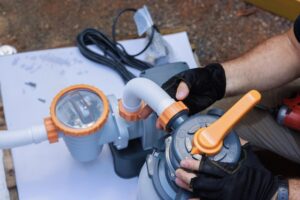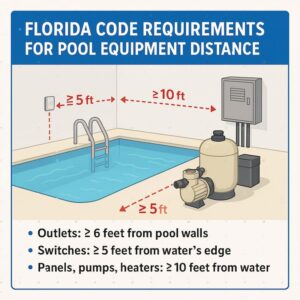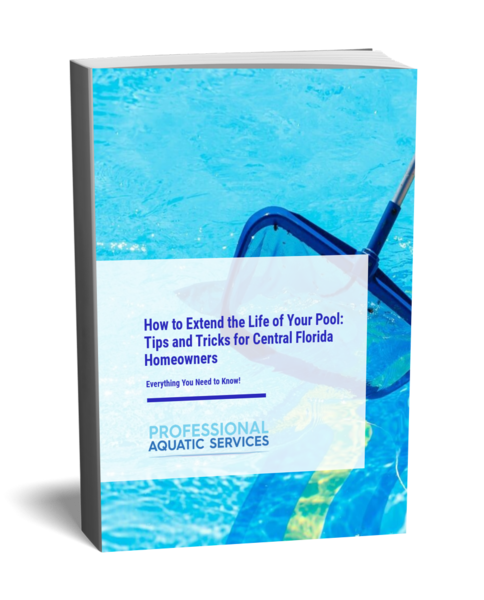If you set pool equipment too close to the water or your house, you could be dealing with constant noise, safety issues, or even a failed inspection.
In Winter Garden, rules and codes spell out exactly how far equipment should sit, but many homeowners find out the hard way after paying for costly fixes. You don’t want pumps and filters that are hard to reach or wear out faster because of poor placement.
The good news is, you can avoid these headaches. By knowing the right distance, you’ll keep your pool safe, efficient, and code-compliant. For Winter Garden homeowners, this guide lays out what you need to know so your pool runs smoothly and your investment stays protected.
Florida Code & Safety Rules for Pool Equipment Placement

Before setting up pool equipment, you need to know the rules that keep your swimming pool safe and code-compliant. Florida has statewide standards, but Winter Garden adds extra permitting steps and HOA approvals. Skipping these details can mean failed inspections, costly fixes, or worse—safety issues for your family.
Standard Distance Requirements in Florida
Florida’s pool laws don’t spell out one exact number for how far equipment must sit, but they set strict safety guidelines.
A barrier at least four feet high is required around in-ground pools, and pool pumps, heaters, or other gear can’t be close enough to help someone climb over. Equipment also needs space for air flow, easy service access, and noise control.
In short, you want your setup close enough to work efficiently, but never so close that it creates hazards.
Winter Garden Permitting & HOA Considerations
In Winter Garden, you can’t install a new swimming pool without a permit. The city asks for site plans, engineered drawings, and an electrical sub-permit for wiring. Even if you pass the city review, your HOA may still have its own rules about how and where pool equipment sits. Checking both boxes up front prevents headaches and delays.
Why Local Code Compliance Protects Homeowners
The following code is about more than passing inspection. It keeps your family safe, makes sure pool components work as they should, and helps protect the value of your home.
Non-compliance can lead to fines, insurance problems, or even liability if something goes wrong. By placing your pool equipment the right way from the beginning, you set yourself up for safe swimming and peace of mind.
Practical Factors That Affect Pool Equipment Distance
Codes only tell part of the story. The real difference comes from where you set your pool equipment. Put it too close to the house and you’ll hear the pool pump every time it runs. Cram it into a tight corner and repairs turn into a headache. If done right, your pool equipment runs smooth. It will hold up longer, and doesn’t take over your backyard with noise. A little planning upfront means easier upkeep and fewer surprises later.
- Noise and Vibration Control Near Living Spaces
Pool pumps and heaters create noise and vibration. If you place them against pool walls or near bedrooms, the constant hum can be disruptive. Keeping equipment away from high-traffic areas improves comfort. - Accessibility for Repairs and Maintenance
Leave room to work around your pool equipment. Without space, even a simple pool pump repair or cleaning turns into a hassle. You also need clearance for testing water chemistry, opening drains, or swapping parts during winterizing. - Electrical and Plumbing Connection Needs
Good installation also depends on safe wiring and plumbing runs. Pool equipment should sit close enough for efficient connections but far enough to avoid flooding, debris buildup, or freezing temperatures.
Here’s a quick look at what to consider when planning location:
|
Factor |
Why It Matters |
Best Practice |
|---|---|---|
|
Noise |
Prevents disruption |
Keep away from living areas |
|
Access |
Allows repairs and cleaning |
Leave 2–3 feet clearance |
|
Connections |
Ensures safe operation |
Protect wiring and drains |
Placement isn’t just about passing code. Put pool equipment where it’s easy to reach, away from noise and water. Get that right, and everything runs smoother and lasts longer.
Common Mistakes to Avoid in Pool Equipment Placement

You’ve learned what good placement looks like. Now see what often goes wrong — and how data can help you avoid it.
Installing Too Close to the Water’s Edge
Many local guidelines suggest placing pool equipment at least 5 feet from the pool wall for safety and code compliance. When it sits closer, splash and water spray can reach motors or controls. They become harder to service. Stick to that 5-foot buffer unless local code demands more.
Ignoring Drainage and Flooding Risks
Florida sees heavy rains. If equipment sits in a low spot, water can pool, flood motors, or corrode electrical parts. Always mount gear on a raised slab or ensure the ground slopes away. A 1–2% grade (i.e., 1–2 inch drop per 100 inches) is often enough to guide runoff away.
Overlooking Future Expansion (heaters, filters, automation)
Some homeowners place just enough room for today’s pump and filter. Later, they add a heater, automation, or salt system and run out of space. Experts often don’t recommend pushing equipment farther than 30 feet from the pool because longer pipe runs increase friction losses, reduce flow, and raise energy use. Leave space for growth from the start.
Work with Professional Pool Contractors in Winter Garden
Placing pool equipment isn’t something to guess on. Too close to the pool and you risk water damage. Too tight against the wall, and repairs become a hassle. Codes add another layer, and missing one detail can cost you.
That’s why hiring a licensed contractor matters. Professional Aquatic Services knows how to set pool equipment where it runs quietly, stays efficient, and passes Winter Garden inspections without delays. They also plan for future add-ons like heaters or automation, so you don’t box yourself in later.
Skip the trial and error. Book a pool equipment installation or relocation consultation today.

